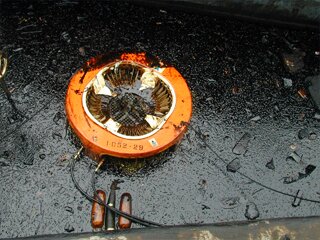A review of the problems posed by spills of heavy fuel oils (2001)
22 May 2014

D.V. Ansell, B. Dicks, C.C. Guenette, T.H. Moller, R.S. Santner and I.C. White (ITOPF)
Paper presented at: 2001 International Oil Spill Conference, March 26-29 2001, Tampa, Florida
Experience shows that spills of persistent heavy fuel oils, whether from cargo carried on tankers or bunker fuel used by ships in general, are among the most difficult to combat. Because of their viscous nature, which leads to prolonged persistence in the marine environment, such oils have the potential to cause widespread contamination of sensitive environmental and economic resources. This is also true for heavy crude oils and those crudes which form viscous and persistent emulsions, and many of the observations contained in this paper apply equally to such oils.
The paper highlights some of the specific problems that ITOPF staff have experienced during their on-site involvement in over 150 fuel oil spills during the last 25 years, including incidents such as the ELENI V (UK/Netherlands, 1978); TANIO (France, 1980); NESTUCCA (USA/Canada, 1988); KOREA HOPE (South Korea, 1990); VISTA BELLA (Caribbean, 1991); KATINA P (Mozambique, 1992); MORRIS J BERMAN (Puerto Rico, 1994); APOLLO SEA (South Africa); IRON BARON (Australia, 1995); NAKHODKA (Japan, 1997); EVOIKOS (Singapore, 1997); KURE (USA, 1997); NEW CARISSA (USA, 1999); ERIKA (France, 1999); VOLGONEFT 248 (Turkey, 1999) and TREASURE (South Africa, 2000).
This review of the practical lessons which can be learnt from past events is intended to provide an informed basis for the selection of more effective response techniques and equipment, and for the development of improved spill response management and contingency planning
Categories: Response Techniques, Papers
